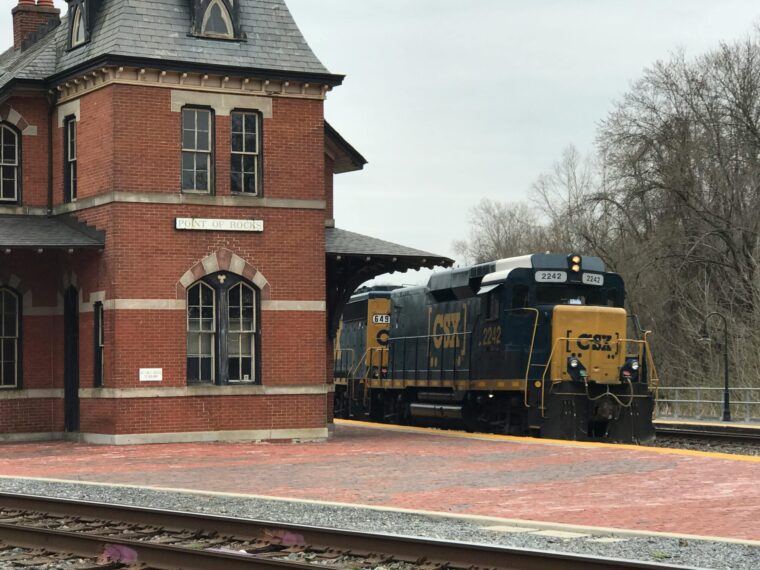
The Maryland Transit Administration (MTA) has released its MARC Growth and Transformation Plan, detailing railroad expansion projects and other transportation improvements totaling an estimated $13.7 billion.
The plan will guide MTA’s future rail initiatives, outlining a five-year, a 15-year and an unconstrained phase. It details service opportunities, future projects, associated costs and next steps for Maryland’s passenger rail service.
MTA estimates total capital costs at nearly $14 billion, with the baseline capital costs over $7 billion through 2050, which are used to continue MARC operations. The remaining funding needs, although not fully secured, reflect MARC’s projected growth and anticipated federal funding. In the interim, MTA anticipates approximately $885 million in needed funding to implement the full capital plan through 2030.
The five-year phase includes four projects on the Penn Line, two on the Brunswick Line and the Camden Line. These include:
Penn Line: The replacement of eight locomotives with new equipment that supports electric operations through the Frederick Douglass Tunnel. MTA is expected to make contributions toward the project in fiscal 2027.
Brunswick Line: Germantown Station area improvements such as improved bicycle and pedestrian access to and from the station and connectivity with the multimodal facilities in the surrounding area. The project also includes improved bus circulation within the station area, improved landscaping and additional way-finding and entrance signage. Currently, MTA has completed 30% of the design for the project.
Brunswick Line: A project that will establish a new Hagerstown bus connection, connecting to the Brunswick Line at Monocacy. Buses will run three times a day to offer connections to trains continuing south to Washington Union Station.
Camden Line: The transition to maintaining service along the line during off-peak hours. In this project, the bus service will operate hourly in both directions during the off-peak periods and on weekends and serve Baltimore Camden Station, Dorsey, Savage, Laurel, Muirkirk, Greenbelt and College Park.
MTA began the planning process nearly two years ago, with a public survey, market analysis, development of service objectives and capital planning implementation strategies In early 2025, the plan was finalized with consideration of stakeholder feedback.
The release comes as MARC ridership has grown significantly in 2025. Since January, overall ridership on the system has surged by 58%. Each line has experienced substantial ridership increases, with the Penn Line up 52%, the Camden Line rising 66% and the Brunswick Line increasing 85%.
The plan outlines strategies for transforming MARC into a flexible, all-day, market-driven service. Priorities include:
Expansions into new service areas in Delaware, Northern Virginia and Western Maryland.
Connections to local transit and Amtrak.
Upgrades to support long-term infrastructure reliability and capacity.
MTA estimates total capital costs at nearly $14 billion, with the baseline capital cost over $7 billion through 2050, which are used to continue MARC operations. The remaining funding needs, although not fully secured, reflect MARC’s projected growth and anticipated federal funding. In the interim, MTA anticipates approximately $885 million in needed funding to implement the full capital plan through 2030.
State officials anticipate these investments in transportation will advance key MARC projects. The projects include $3 million for the planning and design of a new station track at Silver Spring, which would support service increases at one of the busiest stops on the MARC Brunswick Line, and $13.7 million for the planning and design of the Penn-Camden Connector in Baltimore.
Photo by Ray Soderberg from Pexels
The post MTA releases MARC transportation and rail growth plan appeared first on Government Market News.
